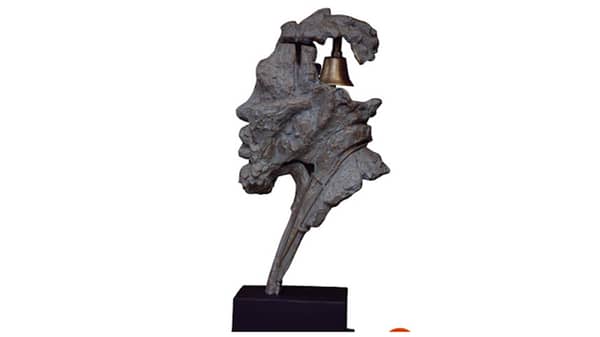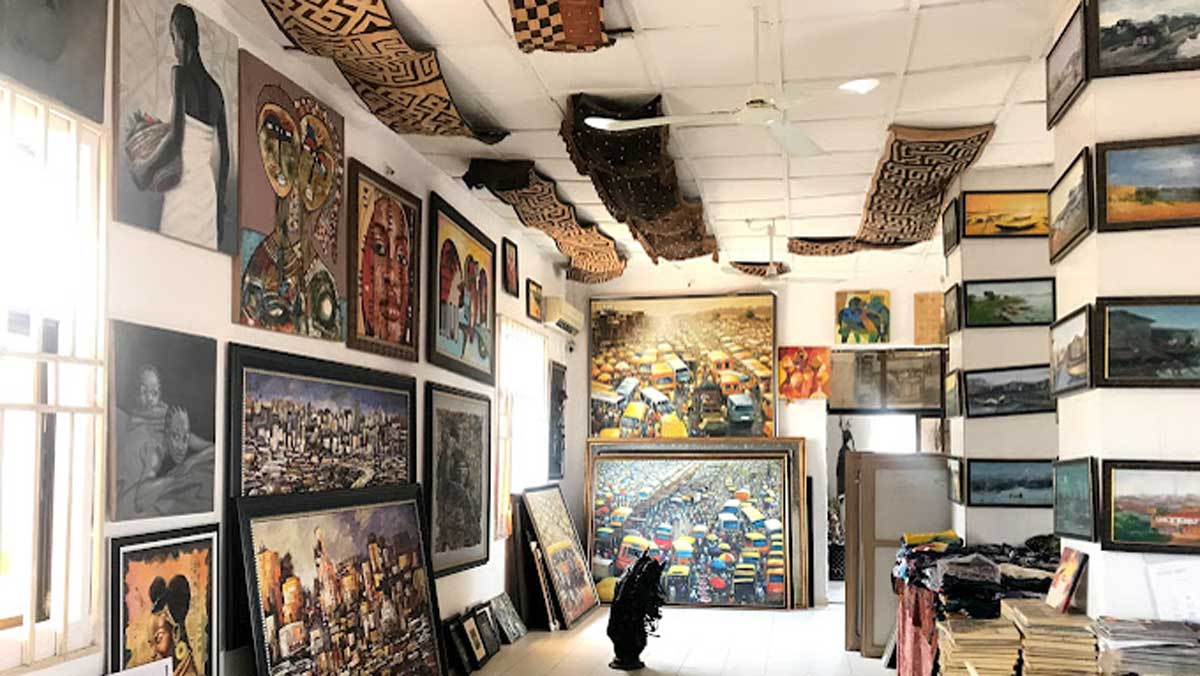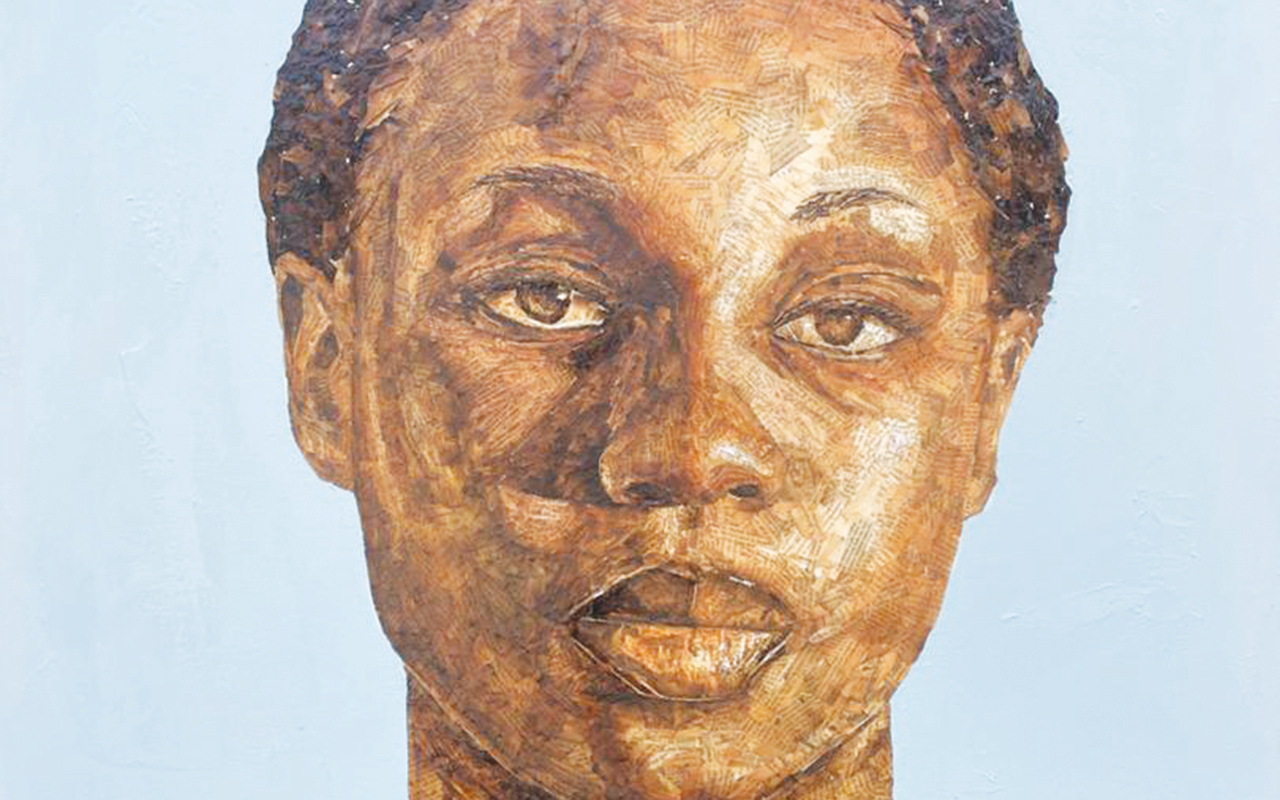
After Saturday October 5’s private viewing of the Sculptors Association of Nigeria’s (ScAN) exhibition, the show continued at National Museum, Onikan, Lagos, until October 10.
ScAN draws it membership from the academia and professional studio artists in Nigeria and this gives a lot of colours to this contemporary outing. Founded in 2018, the young association has presented itself as a formidable group, enthused with the tenet of art practice, organisation and promotion, which makes it a central player in the aesthete-economy of Nigerian art space. Indeed, it prides itself as one of the art associations in Nigeria that has kept faith, thus, far with her values and mission.
Titled, Elixir 3, the show was enriched with works of Uyoyou Nelson Edewor (Cry the beloved country), Dr. Olusola Ayodeji Kukoyi, Kunle Adeyemi, Deola Balogun ( Entrapment), Ken Njoku (Truth be told), Dr Taiwo Sullyman, Akeem Muriana (Amu S’emi), Ato Arinze (Head 1), Anthonia Okogwu, Kenny Badaru, Obadan Chris and a host of other great artists. Norbert Okpu (Assembled together in unity), Dotun Popoola (The love bouquet), Olamide Ojelade, Adebor Philip, Adeogun David (Melancholy), Alli Owolabi (Ojulorowa), Ayooluwa Akinnrinola, Briman Imoudu (Tribute to family), Djakou Nathalie (Deception), Shola Kukoyi, Ganiyu Ayinde (Silence watcher), Henry Unuigboje (Passion of age), Joseph Olabisi (Ojo gbon), Juliet Ezenwa Pearce, Kelly Omodanwen (Ascension), Kunle Fajemirokun (Little reflection of Africa), and Majeed Jamma. Others are Matt Ehizele (Family), Ohiolei Ohiwerei (Oh my comb), Okosi Joseph (Storekeepers), Okay Ikenegbu, Adenle Olukunle (Adorned), Idenu Owhoyove (Baby oku), Martins Akporehe (Love of mother), Odushe Daniel (Irin ajo) and Okezie Okafor, as well as works of student artists were also juried for this exhibition.
In his foreword, Professor Edewor said, “in the few years it has hit the Nigerian art space, it has hosted three national exhibitions, two international sculpture conferences, a national clay sculpture workshop, active participation in yearly International Sculpture Day (ISD) celebrations, collaboration with other art organisations in exhibitions, an active journal in its kitty, several quarterly roundtable sessions where state of the arts and timely issues are disused, an active website, as well as two rounds of national executives, no doubt is a sign of a healthy resilience and formidable character of purpose.”
He said: “Elixir 3; its current national biennial exhibition is a testament to that growth, continuity and consistency. The etymology of Elixir flags the context of soothing and curative applications and approaches to impaired health. Health, they say is wealth. Its essence in human physiognomy is essential to individual and collective well-being and good performance. A sick body produces a dull mind, and invariably low productivity and lackluster. In elixir, a person is soothed and nurtured back to health. Therefore, the importance of restoration and potency to perform cannot be overemphasized when elixir agents run their complete circle.”
He continued: “Sculpture, like other art genres, has four principal characters: documentation, expression, aesthetics and utilitarian. Within the realms of attaining these ultimate goals, the sculptor (artist) while exerting creative consciousness, sensitivity and sensibility is horned in material science, technical engineering, and formal sagacity and astuteness.”
He said these are ultimately hinged on a very high cerebral consciousness that aptly appropriates content which is meaning. This cerebral content is generated from experience, knowledge, training and awareness from physical and ethereal realities.
In Elixir 3, ScAN’s third outing with the theme, speaks volumes in responding to the insidious self-inflicted ailing social condition aided by the twain of corruption and bad leadership in Nigeria.
“The indices of the dire and deteriorating social structure are further inundated by insecurity, economic deterioration, heightened ethnic imbalances leading to cessation agitations from different quarters of the country, perceived electoral theft, uncontrolled inflation leading to hunger with attendant riots and protests. These are no doubt cataclysmically injurious and have thus put the Nigerian state in such health condition that is deathly unwell. It is in a situation such as that, Elixir 3 catalyses as sculpture spectacle by injecting her four cardinal characters as appease elements to human physiological and psychological draining occasioned by the debilitating conditions of national unwellness,” he said.
According to Edewor, “in the works under display, history is invoked as documentation to draw attention to the realities thus inspiring change and caution. Also, the formal expressions as generated reinvents allure and order to sooth-stained nerves that may be impacted by mental health. Through this means, aesthetics is generated to inoculate new orientations that support positive thinking.”
Said the sculptor and academic: “There is an intercourse of philosophy, reason and interpretative realism generated from the titles of the works presented. Thus, Elixir 3 promises to be another experience that will contribute immensely to the national debate.”
It is important to note that Elixir 3, in seeking to capture a wide spectrum of discourses, this year, has expanded the demography of its exhibiting sculptors.
“The inclusion of young graduates is aimed at realising this aspect of listening to younger minds. Who knows, the answer to the national malady be with the younger generation since the older generation has failed,” Edewor surmised.
Balogun noted that the association hopes the show would have educated the public on different available media in sculpture apart from wood, bronze, iron and other mainstream materials. The collection, he said, was to provide soothing balm for the people, which would be emotionally relaxing to the people’s sufferings and pains.
He disclosed that ScAN would have associate members and won’t be limited to the regular sculptors. He explained that the association took a deliberate decision to make participation borderless because materials used in sculpture are different and varied. “We are having a plastocast as a sculptural mirror because it’s embossed and a 3D piece. You can feel it like a relief. So, this modern time, we ask people to put units of materials in sculpture, which we can call sculpture,” Balogun added.
In his curatorial statement, art consultant and curator, Moses Ohiomokhare, “Elixir 3 does not claim finality, but adding their voices and visions to new issues in the field and our environment. They have responded to social stimuli and aesthetic demands, giving their works visibility and authorship.”
He added; “Sculptors’ Association of Nigeria, in this third outing in the last six years, have used their skills to create worthwhile pieces. They have applied an enormous variety of media to evoke our emotional responses. We see in this exhibition forms in metal, clay, stone, fiber, wood, plaster, glass, rubber and random found objects. They have also employed a wide range of techniques to support their artistic identity.”
Elixir 3 ended October 11.






